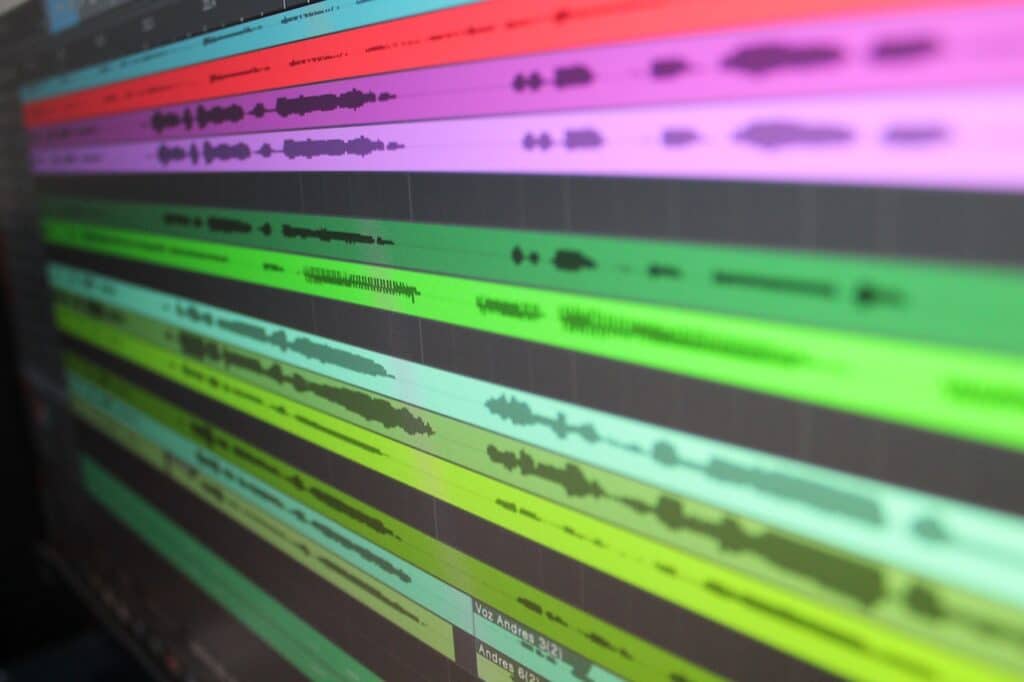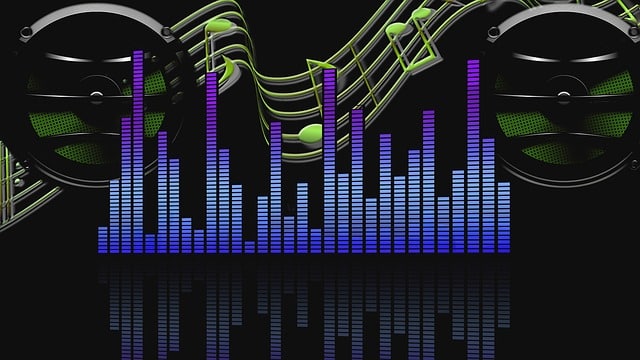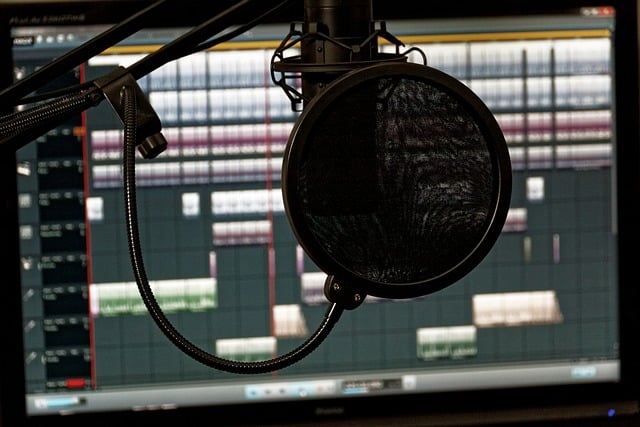Hi-Fi is the terminology that gets tossed around, particularly if someone is talking about music. This term refers to high-fidelity audiophiles to explain the accuracy of reproduced sound by quality stereo and other devices.
Audiophiles love the quality of the sound they listen to. While there are different audio types available, high-fidelity audio takes the lead by leaps and bounds. Everyone deserves to hear this quality audio because it has fewer distortions.
We will discuss in this guide whether you need this Hi-Fi sound or not. So, let’s begin our discussion.
What’s Hi-Fi Audio?
You might have heard about lo-fi music, a genre where hip-hop and jazz are mixed. The instrumentation is irrelevant here, and you need to focus on sound.
This lo-fi music is characterized by the low-quality sound from under the water. It looks like it’s coming from vinyl records with all those rattling, warping, and crackling sounds.
And to add more to the ambiance, the instruments are usually broken or boxy. With hi-fi, it is ultimately the opposite, where the sound is reproduced with many accuracies and very low distortion.
A more technical answer to this question is that music files with a higher complete rate or bit depth than compact disks are high-fidelity music files. CDs come with a sampling rate of 44.1 kHz and a bit depth of 160 bit. So,
high-fidelity audio
Trusted Source
High fidelity - Wikipedia
High fidelity (often shortened to Hi-Fi or HiFi) is the high-quality reproduction of sound. It is important to audiophiles and home audio enthusiasts. Ideally, high-fidelity equipment has inaudible noise and distortion, and a flat (neutral, uncolored) frequency response within the human hearing range.
en.wikipedia.org
has to be higher in both these numbers.
What’s This Sample Rate & Bit Depth All About?
If you don’t know both these terms well, they are related to the conversion process of the files from digital to analog. When digital audio is outputted from the source, it is sent to a DAC or digital to analog converter.
The device takes snapshots which are called samples of information. These samples are used to convert the output from digital to analog by developing a waveform.
On the other hand, both depths are slightly tough to understand. It refers to the number of possible; amplitude values that each time can be recorded when audio is mapped. It can range from 16-bit, 24-bit, 32-bit, and others. But these are the most common bit depths.
With the increase in bit depth, more and more amplitude values are recorded. For instance, 16-bit can record up to 65,536 amp values. With the rise in the sample rate and bit depth, the audio reproduced is more accurate and smoother.
What’s the Difference Between Hi-Fi, Hi-Def, and Lo-Fi?
You might assume that high fidelity and high definition sounds are the same. But they are poles apart. We have already briefly discussed lo-fi above as it is a raw form of music with imperfections and very low sound quality with a lot of distortion. It’s primarily the difference between a quality digital download vs. an old record.
Lo-fi needs a lot of processing, but it has accuracy. This is where a DAC comes in to convert it into analog audio. And with the help of an amp, this file is brought to life and becomes much better to listen to.
Hi-Fi vs. Hi-Def
As we mentioned above, Hi-Fi refers to high fidelity, and it’s about high-quality music. Its audio has charity without any losses, and there is no distortion. By its simple definition, hi-fi audio is about music files with much better depth and sampling frequency than CD (44.1 kHz, 16-bit).
Hi-Def has no universal standards, a term that music companies use. It just refers to the overall digital music experience and nothing else. Hi-Def audio is digital and is needed to produce all the sounds while watching your favorite show.
| Lo-Fi | Hi-Fi | Hi-Def |
| Means Low Fidelity | High Fidelity | High Definition |
| Low-quality music | High-quality music | High-quality audio for videos |
| Distortions and noise are there | No distortion or noise | No warping or noise in the videos |
| Relatively cheaper | More expensive | More expensive due to the involvement of quality displays |
| Only analog functions | Digital and analog functions | Digital functions |
| Directly related to audio | Related to audio | Directly related to video |
How Is Hi-Fi Better Than Others?
Those who are after best quality audio are referred to as audiophiles. And with hi-fi audio equipment and streaming, you have everything you have ever asked for. But as you are going to the highest quality, you will have to pay a specific price.
Therefore, the devices categorized as hi-fi fall into the premium category. The simplest of these headphones can cost well above $1,000.
If you are paying that much for an audio device, you must put in a lot of effort and research before getting one. However, when you listen to some lo-fi audio compared to hi-fi audio, you will immediately understand what’s worth paying more.
There are some brands out there that offer high-quality hi-fi devices and headphones and that, too, at very affordable prices. Make sure you go for the devices with noise cancellation. This feature will further reduce any noise or distortions.
As a result, you will get a hi-fi-like sound, and that too without breaking your wallet. And if you include a pair of dynamic drivers, you will get a pair of headphones that can work as low-cost hi-fi audio equipment. Moreover, with noise cancellation, your ears will stay healthy because they will have to deal with less noise.
How to Get Hi-Fi Audio?
If you want to go for this high-fidelity audio, you must have a hi-fi sound system. Unfortunately, the sound card that your computer comes with won’t be able to deliver the same quality. Therefore, you must purchase a few more items before you can listen to hi-fi music on your system.
First of all, you will need a DAC as it will convert digital information from the source and convert it into an analog signal and, in the princess, improve the signal quality slightly as well.
Some of these digital to analog converters come with an inbuilt amplifier. If you are shopping on a budget or are just a beginner audiophile, you can go for this combo. But we highly recommend buying a standalone DAC.
These standalone devices or amps come with better specs and are more powerful. Moreover, they have much better responsiveness compared to their combo counterparts.
DACs and Amps
There are various types of these DACs. They range from the ones that sit on your desk or shelf to the ones that can easily fit into your pocket and pair with your phone.
If you buy a standalone DAC, you will need an external amp because the external standalone DACs don’t come with built amps. Therefore, you must identify which type of DAC is the right option.
These DACs can boost the overall audio signal once converted from digital to an analog waveform. An amplifier is needed here because the audio output from a DAC is meager in volume.
Audio converted won’t come out properly through headphones or speakers. An amp can send more power to your headphones and speakers, boosting the audio signal from DAC. These DACs and amps are essential because they shake up the overall sound.
But with your DAC and amp, you will need quality hi-fi headphones. These headphones or speakers come with a broader soundstage, and they have a flat frequency response.
Many companies have these quality speakers and headphones. These include the likes of Sony, Beyerdynamics, Sennheiser, TaoTronics, and others.
Understanding Hi-Fi File Types
There are different audio file types, and you might be familiar with some of them. These are WAV, AAC, or MP3. But certain file types lose their quality during the encoding process.
It means they are farther from the sound that was initially intended. But lossless files don’t lose their quality during the encoding procedures.
Therefore, that is considered to be high resolution or high fidelity file types. They are highly accurate representations and much closer to the original sound intended to be heard.
It would be best if you kept in mind that these hi-fi audio files tend to take up a lot of space. Therefore, you must purchase an external storage drive or upload your files to the cloud to save computer space.
Let’s briefly discuss some of these files types and how they differentiate from one another,
WAV
The waveform audio file format is in which CDs are encoded, and they are uncompressed. It means that the file size of these formats is massive. They do take up huge space on your systems and devices. But this large file size doesn’t mean they have superior sound quality.
AIFF
The audio interchange file format is the Apple version of WAV, commonly used in Mac computers. However, with uncompressed audio quality, these files consume plenty of space. And it just increases with high-resolution files.
FLAC
The free lossless audio compression is lossless, and this type supports hi-fi audio. But the good thing is that FLAC file sizes are only half as big as their WAV counterparts. Therefore, they don’t take up much space. Due to these two attributes, audiophiles love FLAC files. However, this file format is not supported by Apple devices.
ALAC
The Apple lossless audio codec is Apple’s very own FLAC version. It is lossless, can store metadata, and will only take half as much space as a WAV file. These file types work fine with all Apple devices, and you can play them on iTunes.
DSD
The direct stream digital format is a hi-fi format that super audio CDs use. Unfortunately, this file format is not commonly supported on smartphones and computers.
But they have a high sample rate because they have a large file size. Based on the source file, you can compress these files by up to 60 percent and reverse them without losing fidelity if you are looking for more space.
MQA
The master quality authenticated file format is lossy but has better quality than FLAC. It might be smaller in size too. But MQA file sizes are not as small as MP3, but they compete. Tidal uses this file format, so it’s not very popular yet.
Pros & Cons of Hi-Fi Audio
As with other things, there are pros and cons associated with hi-fi audio. And that is the case despite the fact that hi-fi is much better in terms of quality. Here are some pros and cons that you need to consider.
Pros
Overall better audio quality
These hi-fi audio files are more transparent and crisper, and you will hear more details in these audio files. And they are much better in comparison to lower to average resolution audio files.
Improved reproduction accuracy
Analog audio files tend to be highly accurate in association with their original properties compared to other lower-resolution audio files.
A better overall listening experience
You will be able to experience different sounds as the artists intended to be heard by their listeners because of the accuracy and transparency of audio.
Cons
Not very common
This format is not widely available on major music streaming platforms such as Apple Music or Spotify. Instead, your options are much more limited to hi-fi platforms such as Tidal.
Less compatible with software programs for popular music libraries
You must download special software programs to play this audio at higher sample rates and bit depths because programs such as iTunes won’t help you with this.
Consume a lot of storage space
These audio files are large and can take up a lot of space in your storage space based on your file format.
Where Can I Access Hi-Fi Audio?
An excellent source to access hi-fi audio is Tidal, an audio streaming source that only has high-resolution audio. It allows its users to stream up to 24-bit and 96 kHz quality.
Another source is Amazon Music which is gaining more and more popularity among audiophiles for its hi-fi audio. Apple Music is another option.
Apart from these, there are other great sources you can try out for hi-fi audio. And these options have a much better sample rate to offer.
HDtracks
They allow you to purchase AIFF, WAV, ALAC, and FLAC files, with 24-bit, 192 kHz being the highest resolution available. They have one of the most extensive libraries public on the internet.
Qobuz
They offer AIFF, WAV, FLAC, ALAC, WMA, AAC, and MP3 file formats. The highest resolution on offer here is 24-bit, 192 kHz. You can stream and purchase your music here.
Chandos
They have WMA, FLAC, ALAC, WAV, AIFF, and FLAC Surround Sound 5.1. This is the best website for jazz and classical music in hi-fi, but you can also find a wide range of rock and pop tracks. However, the website focuses more on calmer genres.
Acoustic Sounds
They offer file formats including DSD, ALAC, and FLAC, while the highest quality available here is 24-bit, 192 kHz. You can find a wide range of rock, pop, and funk tracks; however, it’s not just about indie or acoustic tracks, as the name implies.
Conclusion
If you are an audiophile or want to listen to quality music, you must listen to hi-fi audio. And for that, you will have to send on quality equipment and hardware. This audio is delivered to your ears as the composer or creator intended, and you will experience something extraordinary when you listen to hi-fi audio.
You need to make sure that you go for these brands. Some essential features to consider here are noise cancellation and dynamic drivers.
With these features, you will get a quality hi-fi-like sound where there won’t be much noise to deter. These features are handy in keeping your ears healthy because you won’t have to process much noise while listening to these audio files.
Therefore, we highly recommend you go for these top-notch hi-fi audio hardware and try this version out. And you will have an experience of a lifetime. And if you see that the hardware costs too much, you can do a bit of research and find some great options that can deliver hi-fi-like sound at a much lower cost.
















High Fidelity audio has to be higher than 44.1kHz sampling rate and 16 bit depth? Where did you get that nonsense from? CD quality is Hi-Fi. It can carry more than the full audible range of human hearing without noticeable distortion. Anything more than that is BS for audiophiles by audio manufacturers who are in the business of making profit.
In a real world scrnario you’ll have ambient factors interfering with your “higher than CD specs” audio equipment, making it pointless.